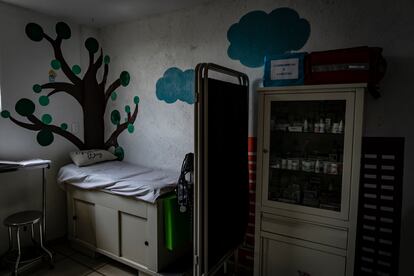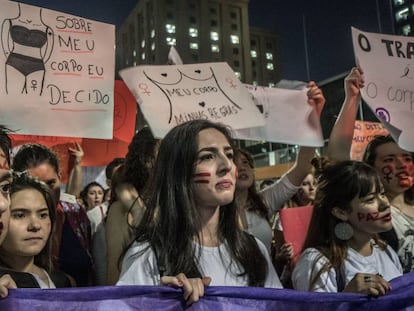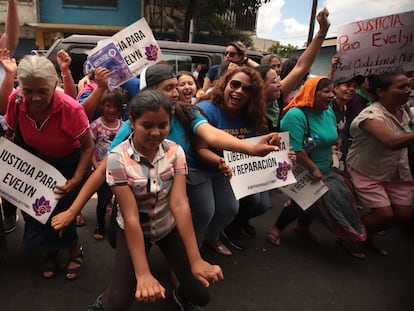In the fight for gender equality, what is not in the budget is demagoguery
There has been great progress in gender equity in the last 10 years, but it has been slower than desirable, and the pandemic has created a greater sense of urgency

Over the last 10 years, there have been significant advances in gender equality. Maternal mortality decreased by 10% globally, and the number of girls attending secondary school increased by 5%. However, these advances are occurring at a slower pace than desirable. Some figures are dramatic; for example, in low-income countries, only 40% of women join the labor market.
The pandemic has made the fight for gender equality even more challenging. Although Covid-19 has hit us all, its consequences have not been felt equally. For example, in remote and most vulnerable areas of Kenya, 16% of girls did not return to schools once they reopened, while the dropout figure was 8% for boys. In other words, everyone was affected, but the girls were twice as affected. However, the sharpest impact on gender equality perspective has been on women’s employment and economic activities and their exposure to gender-based violence.
On Gender Based Violence (GBV): One in 3 women was estimated to suffer from GBV before the pandemic. With the pandemic, 54% of women observed an increase in prevalence. The highest perceived increases have been reported in Latin America, the Caribbean region, and Sub-Saharan Africa.
Domestic and care work: Women took on a more significant share of the increase in the burden that was associated with school closures and other service disruptions. In most countries, women reported higher rates of forgoing work to care for others than men.
Employment loss: In all regions, women reported higher rates of employment loss than men, with the most significant gender gaps seen in the Middle East, Northern Africa, Latin America, and Caribbean regions.
How to correct this and how to accelerate the path to equality? It is not a simple issue, even though gender equity and other issues such as climate change are recognized as priorities and central elements in constructing a post-Covid world. The great challenge lies not in the fact that gender equality is a priority issue but in how to finance actions that help close the gap between men and women. The issue is that public spending has a powerful inertial component; budgets only change incrementally from year to year. This has led officials in spending areas to resist incorporating new programs and initiatives (despite being identified as priorities at the highest level!) due to the lack of fiscal space.
For this reason, it became necessary to translate the concerns around gender into the language and way of operating of the officials in charge of spending. It would seem a very stuffy subject but introducing concepts such as “gender-sensitive budget” or modifying public accounting (one of the driest subjects imaginable) has allowed significant progress. To begin with, it enables knowing from the outset if the budget identifies gender actions. Second, the amount of the budget’s impact on gender equality issues, and third, monitor progress in these programs.
These issues are less obvious than they seem because spending that could go to a traditional item, infrastructure, for example, might at first glance appear to have no impact on gender issues. However, this might not be the case. For example, a study through focus groups by the World Bank showed that some women in Mexico were reluctant to enter the labor market due to the lack of security in public transportation. Thus, spending on improving public transit infrastructure would have an impact not only on mobility but would also create conditions that could help women enter the labor market.
For this reason, it is not surprising that gender equality has gradually been incorporated into the formulation and execution of national budgets. In 2002, 40 countries had some incipient gender element in their budget. Today there are nearly 80 that already have a budget with significant gender perspective elements.
Similarly, the number of public finance management tools incorporating equality elements has been growing significantly. For example, Botswana conducted a gender assessment last April using the Reference Framework for the Evaluation of Management of Public Finances (PEFA). This evaluation will allow them to advance in the implementation of gender elements in their budget and evaluate specific programs, such as the one that provides incentives for groups traditionally marginalized from the public procurement system, women, youth, and people with disabilities.
Gender equality is a critical development objective and a key contributor to other goals, such as stability, resilience, poverty reduction, growth, and social cohesion. A wide range of policies and expenditure programs may be delivered more impactfully if rooted in gender analysis. For example, ample evidence shows that social safety nets are more effective in delivering on objectives from poverty reduction to child nutrition and education if cash transfers are given to women.
The fight for gender equality is a very complex problem with many dimensions. This is one more reason why we need urgently to accelerate the adoption of gender issues into national budgets decisively, clearly, and transparently. As we once heard a very senior official say, “In public policies, what is not in the budget is demagoguery.”
*Hana Brixi is the Gender Global Director and Arturo Herrera Gutierrez is the Governance Global Director, both at The World Bank.









































